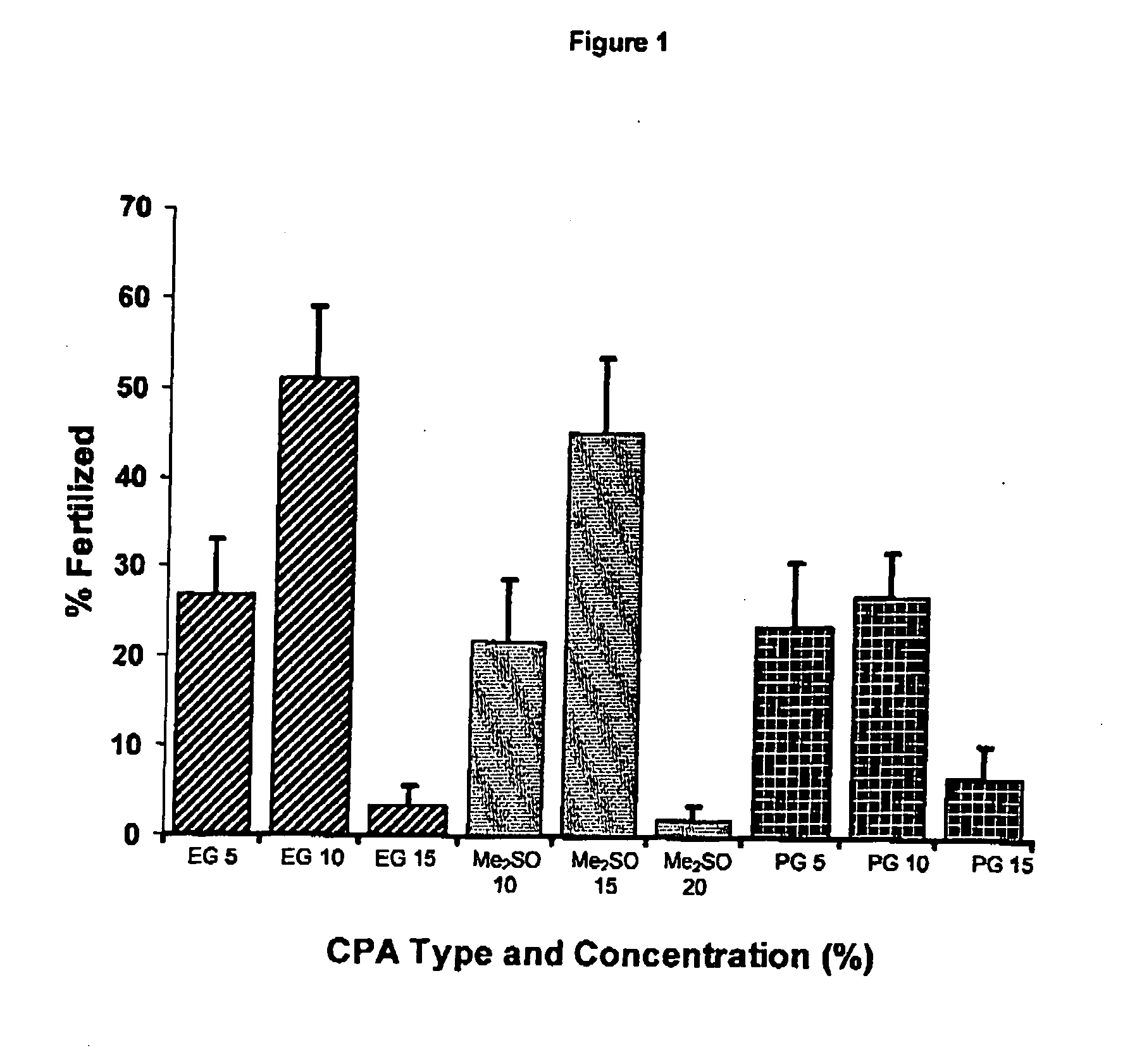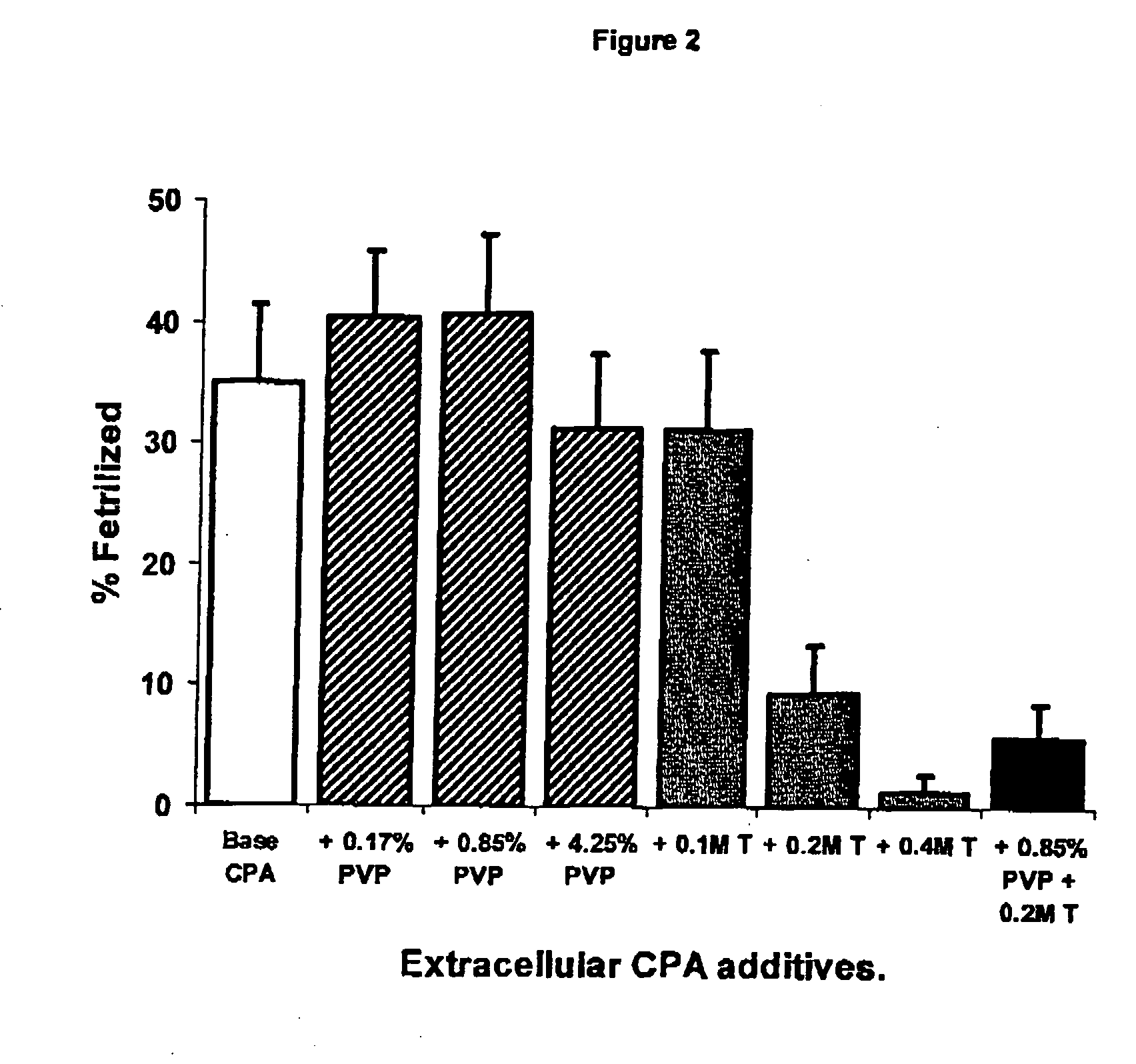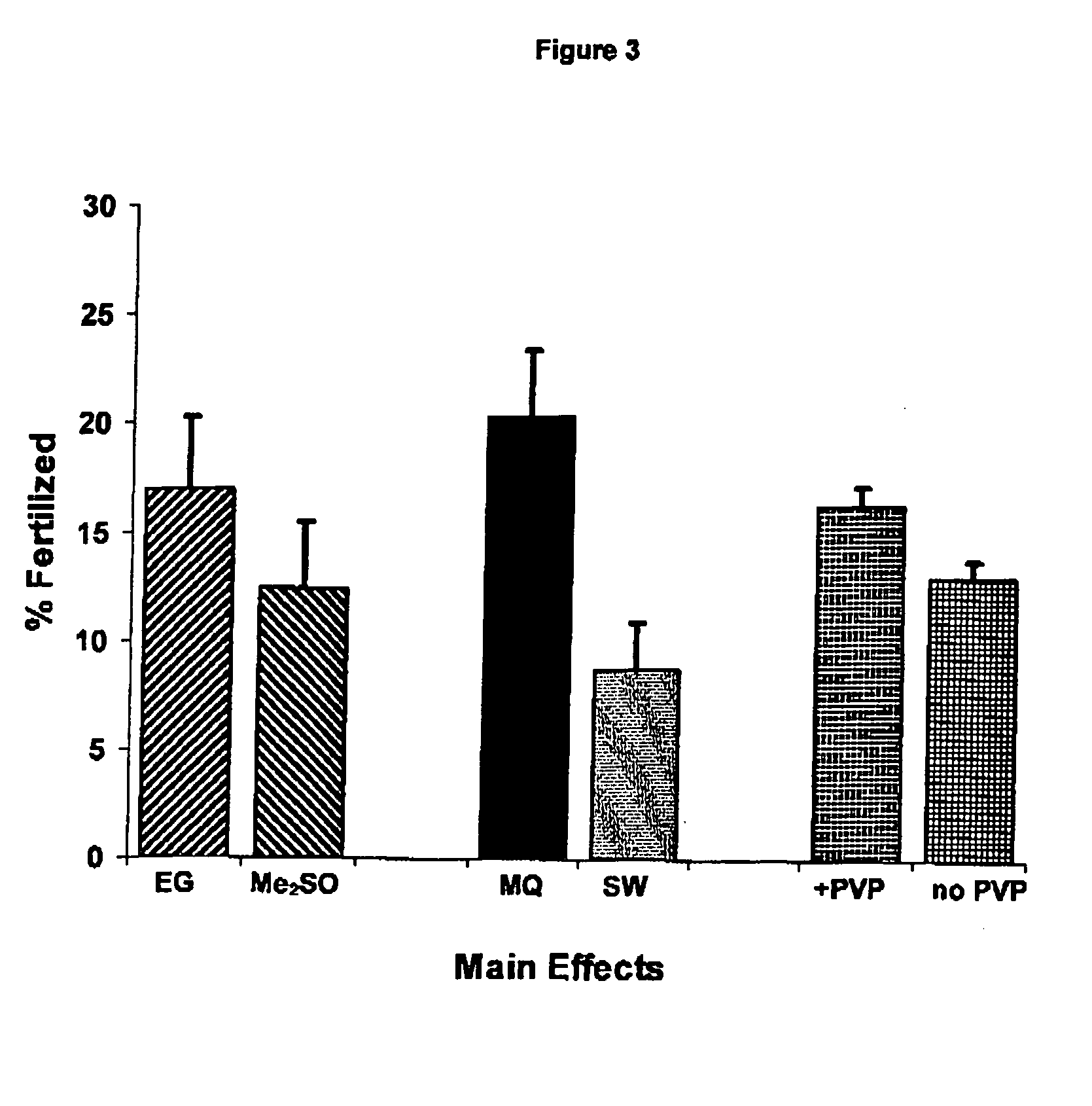Cryopreservation method for bivalve oocytes
a cryopreservation method and bivalve technology, applied in the field of cryopreservation bivalve oocytes, can solve the problems of high post-thaw development, low post-thaw development, and failure to cryopreservation bivalve oocytes to date, and achieve the effects of reducing the number of dead animals
- Summary
- Abstract
- Description
- Claims
- Application Information
AI Technical Summary
Benefits of technology
Problems solved by technology
Method used
Image
Examples
example 1
General Methods
Example 1.1
Garnete Recovery
[0072] Oocytes were obtained during the natural breeding season from sexually mature Pacific oysters reared at the Glenhaven Aquaculture Centre in Nelson, New Zealand or from commercial farms throughout New Zealand. Oocytes were recovered by physical stripping of the gonad after opening the shell. The maturity of the oocytes was assessed by visual examination. Recovered oocytes were washed into glass beakers containing 1 μm cartridge filtered seawater (SW) at ambient temperature (˜23° C.) and allowed to settle for approximately 60 min in a cold top set at 5° C. Settled oocytes were collected into 50 mL Falcon tubes (Becton Dickinson, Franklin Lakes, N.J.) and placed in a water bath at 5° C. where they were settled again for approximately a further 30 min. Depending on the experiment, oocytes from various individuals were either pooled or placed individually into 50 mL Falcon Tubes. The density of the oocytes was calculated and the pool or...
example 1.2
Cryoprotectant (CPA) Solutions
[0074] CPAs were prepared in either SW or Milli-Q® water (MQ) at double the final concentration required during cryopreservation. Solutions contained either a permeating CPA only (dimethyl sulfoxide, Me2SO; ethylene glycol, EG; propylene glycol, PG; methanol, METH) or a mixture of permeating and non-permeating and extracellular CPAs (trehalose, T; polyvinylpyrrolidone—PVP-40; PVP). All chemicals were sourced from Sigma (St Louis, Mo.). Solutions were stored at 5° C. and usually prepared fresh each day.
example 1.3
Freezing and Thawing
[0075] Oocytes to be cryopreserved were added to 5 mL glass culture tubes (Kimble Glass Inc., Vineland, N.J.) and diluted 1:1 with CPA solutions at room temperature (˜23° C.). The CPA solutions were added to the oocyte suspension in 10 steps of equal volume each min for 10 min and the tubes were agitated after each addition. Cryopreservation straws (0.25 cc, IMV, France) were then loaded with the solution containing oocytes and CPA, sealed with PVC powder and laid flat on a rack. The total time at room temperature was 20 min.
[0076] Loaded straws were placed into Cryogenesis freezers (Cryologic Pty Ltd, Mt Waverly, Australia) and held at 0° C. for 5 min. The freezers were programmed to cool at 1° C. min−1 to various hold temperatures (standard: −10° C., hold for 5 min) where ice formation in the straws had either already occurred or was seeded by touching the straws with a liquid nitrogen cooled cotton bud. Following the hold period, the freezers were then progr...
PUM
| Property | Measurement | Unit |
|---|---|---|
| temperature | aaaaa | aaaaa |
| temperature | aaaaa | aaaaa |
| temperature | aaaaa | aaaaa |
Abstract
Description
Claims
Application Information
 Login to View More
Login to View More - R&D
- Intellectual Property
- Life Sciences
- Materials
- Tech Scout
- Unparalleled Data Quality
- Higher Quality Content
- 60% Fewer Hallucinations
Browse by: Latest US Patents, China's latest patents, Technical Efficacy Thesaurus, Application Domain, Technology Topic, Popular Technical Reports.
© 2025 PatSnap. All rights reserved.Legal|Privacy policy|Modern Slavery Act Transparency Statement|Sitemap|About US| Contact US: help@patsnap.com



